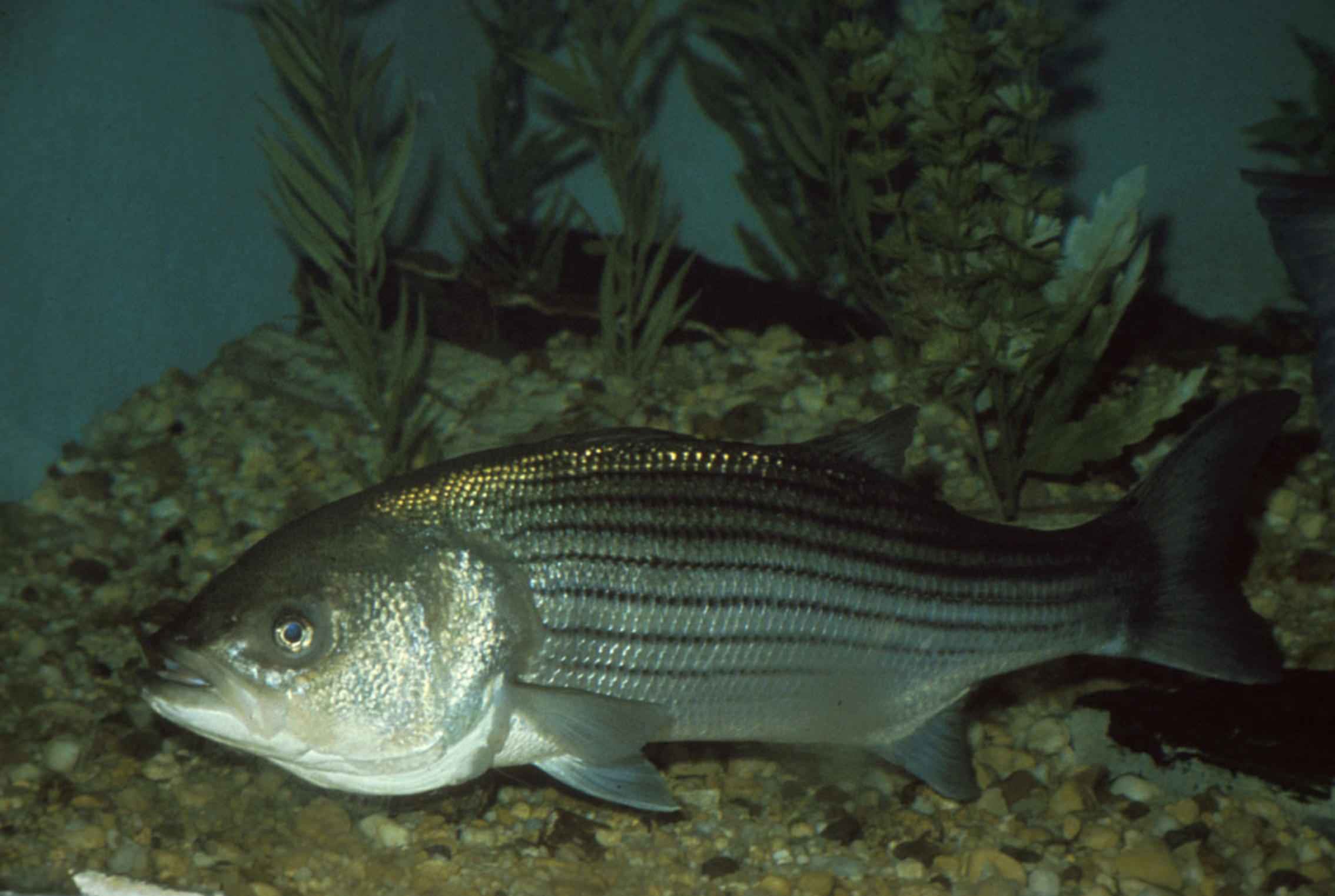

The striped bass, also known as Striper or Rock bass among the fishing community, is a salt water fish which is found all along the Atlantic coast. While it is often located in rivers, bays, inlets, estuaries, and creeks, the striped bass still needs salt water, but is usually found close to coastal features since it only goes further out to sea during migration.
Because of this migratory habit, there is no one perfect fishing technique to catch the striped bass. It is most often recommend to fish for them from a beach, a jetty, a bridge, or a boat, since all of these have been known to work.
The striped bass is easily recognizable due to the long black stripes down its silver streamlined body. Other recognizable features include a large mouth with an extended lower jaw and forked tail. The average striped bass is between 18 and 32 inches long and weighs 5-20lbs. However, the world record for striped bass weight stands at 81lbs 14oz.
When handling the striped bass, keep an eye out for spines on its back and gill plate, which can sometimes be sharp.
Striped bass are known as “lazy feeders” because they are not guaranteed to bite even with a large selection of bait. This is partly because their diet differs radically over the course of their lifetime, ranging from zooplankton to herring.
As a result, when fishing for striped bass it’s recommended to try a variety of different baits to lure it in. This includes bait such as clams, eels, anchovies, bloodworms, night crawlers, chicken livers, menhaden, herring, shad, and sandworms.
For more information on the striped bass, or for other unique fishing tips and techniques, be sure to download Pro Angler in the App Store today.





